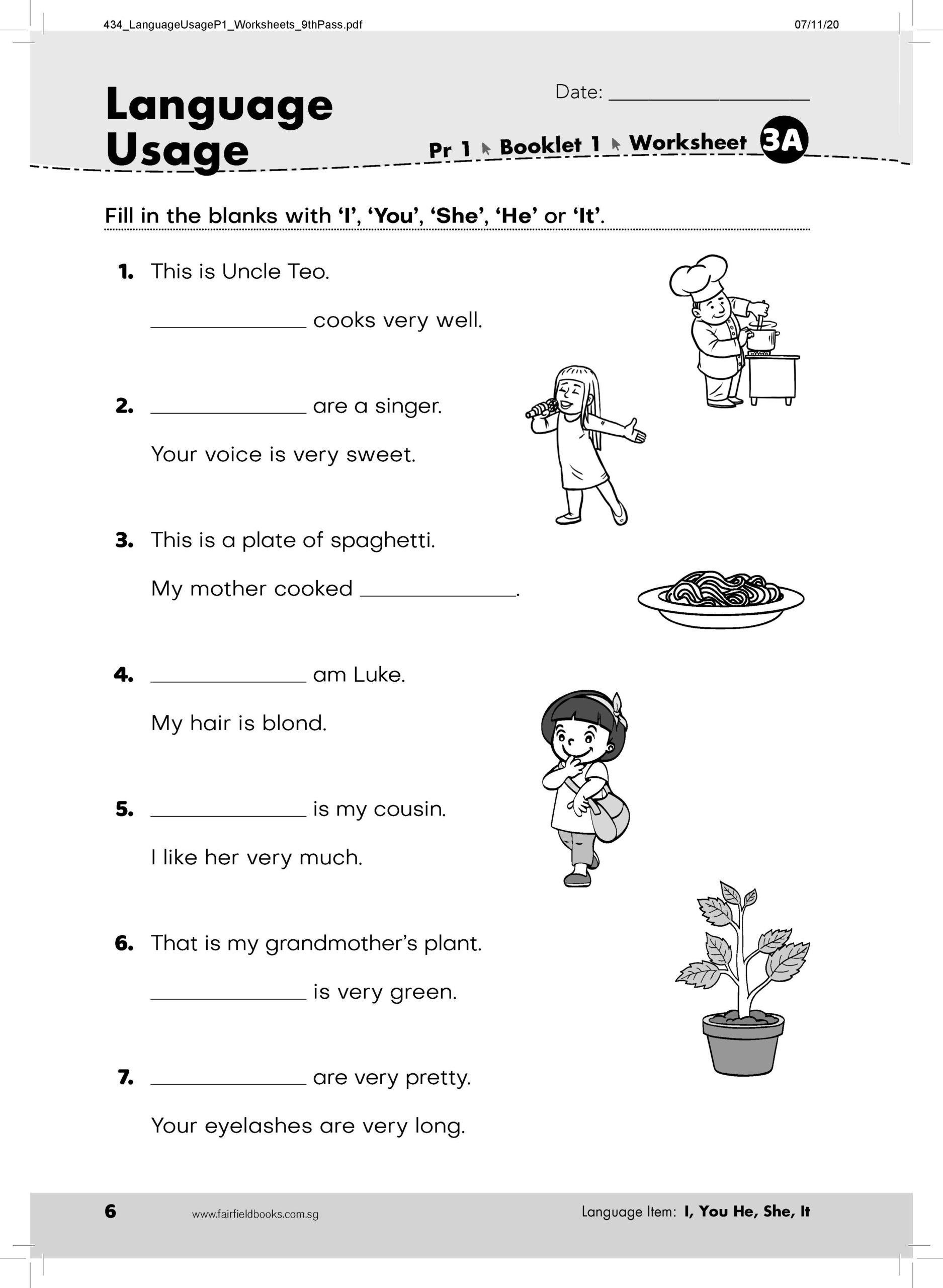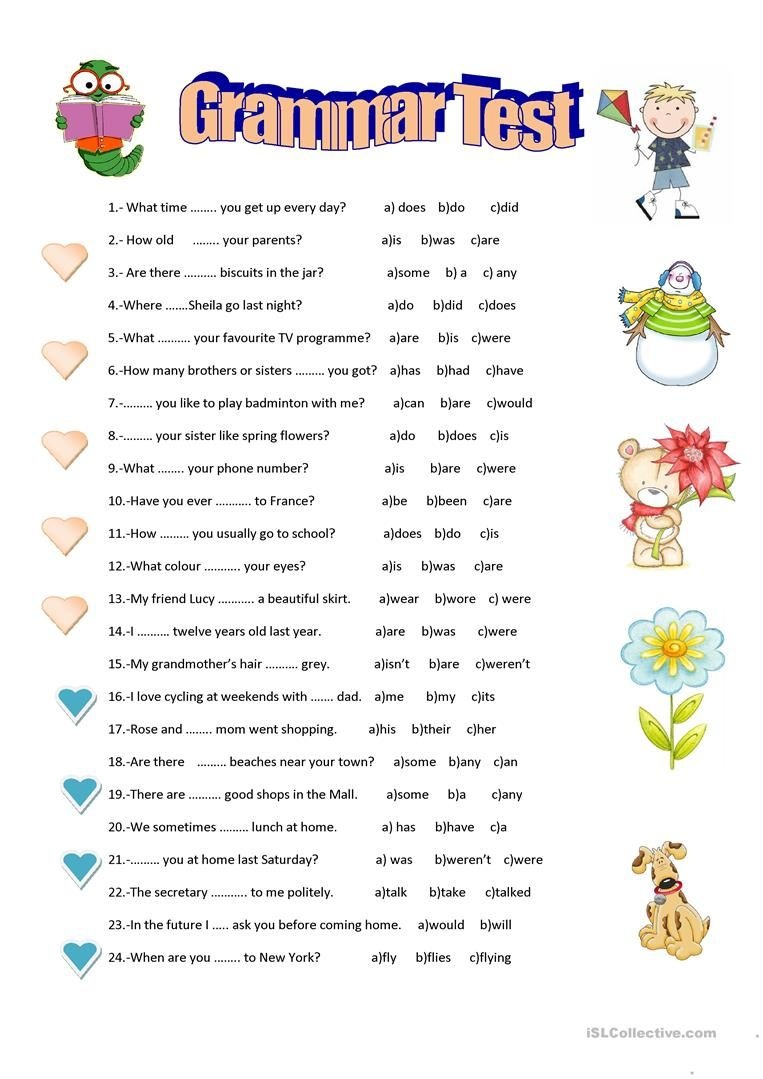
Unlocking Language Potential: The Indispensable Role of Primary School Grammar Worksheets
In the foundational years of a child’s education, mastering the intricacies of language is paramount. It’s not merely about memorizing rules; it’s about equipping young learners with the tools to communicate effectively, think critically, and express themselves with clarity and confidence. Among the myriad resources available to educators and parents, primary school grammar worksheets stand out as a consistently valuable and adaptable tool. These structured exercises offer a systematic approach to introducing, reinforcing, and assessing grammatical concepts, forming a crucial stepping stone in a child’s linguistic journey.
This article delves into the profound importance of grammar in primary education, explores the characteristics of effective primary school grammar worksheets, categorizes various types, highlights their benefits, and provides strategies for their optimal use.
The Cornerstone of Communication: Why Grammar Matters in Primary School

Grammar is the skeletal structure of language. Without it, words are just scattered bricks; with it, they become coherent, meaningful constructions. For primary school students, understanding grammar is not an abstract academic exercise but a practical necessity for:

- Effective Communication: Correct grammar enables children to articulate their thoughts, feelings, and ideas precisely, both in spoken and written forms. It prevents misunderstandings and ensures their message is received as intended.
- Reading Comprehension: A solid grasp of grammar helps children decode sentence structures, identify subjects and predicates, and understand the relationships between words, thereby enhancing their ability to comprehend what they read.
- Strong Writing Skills: From crafting simple sentences to developing coherent paragraphs, grammar provides the framework for well-organized and impactful writing. It empowers children to write narratives, reports, and essays that are clear, logical, and engaging.
- Academic Success: Proficiency in grammar is a fundamental skill that underpins success across all subjects. Whether analyzing a science text, writing a history report, or solving a math problem that involves word descriptions, strong language skills are indispensable.
- Confidence and Self-Expression: When children feel confident in their ability to use language correctly, they are more likely to participate in discussions, ask questions, and express their unique perspectives without fear of error.



Given this foundational importance, the role of resources like primary school grammar worksheets becomes evident. They provide the structured practice necessary to internalize these crucial rules and apply them consistently.

What Makes a Good Primary School Grammar Worksheet?
Not all worksheets are created equal. An effective primary school grammar worksheet is designed with the young learner in mind, ensuring it is engaging, instructional, and conducive to learning. Key characteristics include:

- Age-Appropriateness: The content, vocabulary, and complexity of tasks must align with the cognitive and developmental stage of the students. A worksheet for a Year 1 student will look very different from one for a Year 6 student.
- Clear and Concise Instructions: Children need to understand exactly what is expected of them. Instructions should be simple, direct, and ideally accompanied by an example.
- Visual Appeal: Bright colors, relevant illustrations, and a clean layout can significantly increase engagement. Overly cluttered or text-heavy worksheets can be daunting for young learners.
- Varied Activity Types: Repetition is key for reinforcement, but monotony leads to disengagement. Good worksheets incorporate a mix of activities such as:
- Fill-in-the-blanks
- Matching exercises
- Sentence completion
- Identifying errors
- Sentence construction (e.g., combining simple sentences)
- Categorization
- Underlining or circling specific word types
- Focused Learning Objectives: Each worksheet should target one or a few related grammar concepts, allowing students to concentrate their efforts and achieve mastery before moving on.
- Relevance and Context: Using examples that relate to a child’s everyday life or current classroom topics (e.g., animals, school, family, popular stories) makes the grammar more tangible and meaningful.
- Progressive Difficulty: Worksheets should ideally move from simpler recognition tasks to more complex application and creation tasks, building on previously learned concepts.
- Opportunities for Self-Correction: For independent practice, some worksheets can include answer keys or allow for peer-checking, fostering self-reliance and immediate feedback.


Types of Primary School Grammar Worksheets by Concept
Primary school grammar worksheets cover a broad spectrum of grammatical concepts, progressively building a child’s understanding. Here are some common categories:
-
Nouns Worksheets:
- Identifying common and proper nouns.
- Singular and plural nouns (regular and irregular).
- Collective nouns.
- Possessive nouns.
- Concrete and abstract nouns.
- Activities: Circle the nouns, write proper nouns for common nouns, change singular to plural.
-
Verbs Worksheets:
- Identifying action verbs.
- Linking verbs (is, am, are, was, were).
- Helping verbs (has, have, had, will, can).
- Verb tenses (past, present, future).
- Subject-verb agreement.
- Activities: Underline the verb, complete sentences with the correct verb tense, match verbs to subjects.
-
Adjectives Worksheets:
- Identifying adjectives that describe nouns.
- Using adjectives to add detail.
- Comparative and superlative adjectives.
- Activities: Circle the adjectives, write adjectives to describe pictures, complete sentences using descriptive adjectives.
-
Adverbs Worksheets:
- Identifying adverbs that describe verbs, adjectives, or other adverbs.
- Adverbs of manner, place, time, frequency.
- Activities: Underline adverbs, rewrite sentences adding adverbs, choose the correct adverb.
-
Pronouns Worksheets:
- Identifying personal pronouns (I, you, he, she, it, we, they).
- Possessive pronouns (mine, yours, his, hers, ours, theirs).
- Subject and object pronouns.
- Activities: Replace nouns with pronouns, fill in the blanks with appropriate pronouns.
-
Prepositions Worksheets:
- Identifying prepositions (on, in, under, over, beside).
- Using prepositions to show location or time.
- Activities: Circle prepositions, complete sentences with prepositions.
-
Conjunctions Worksheets:
- Identifying and using coordinating conjunctions (FANBOYS: for, and, nor, but, or, yet, so).
- Introduction to subordinating conjunctions (because, although, when).
- Activities: Join sentences using conjunctions, choose the correct conjunction.
-
Punctuation Worksheets:
- Full stops (periods), question marks, exclamation marks.
- Commas in lists, after introductory phrases.
- Apostrophes for possession and contractions.
- Quotation marks for direct speech.
- Activities: Add missing punctuation, rewrite sentences with correct punctuation, correct punctuation errors.
-
Sentence Structure Worksheets:
- Identifying subjects and predicates.
- Simple, compound, and complex sentences (introduction).
- Sentence fragments and run-on sentences.
- Activities: Identify the subject/predicate, combine simple sentences, rewrite fragments/run-ons.
-
Capitalization Worksheets:
- Capitalizing proper nouns, beginning of sentences, titles.
- Activities: Rewrite sentences with correct capitalization, identify capitalization errors.
The Multifaceted Benefits of Primary School Grammar Worksheets
When integrated thoughtfully into the curriculum, primary school grammar worksheets offer a wealth of advantages for both students and educators:
- Reinforcement and Practice: Worksheets provide the necessary repetition for students to internalize grammatical rules. Consistent practice helps solidify understanding and moves concepts from short-term memory to long-term retention.
- Independent Learning: They allow students to work at their own pace, fostering self-reliance and accountability. This is particularly beneficial for differentiated learning, as faster learners can progress independently, while those needing more time can work without pressure.
- Diagnostic Tool for Teachers: Completed worksheets offer valuable insights into a student’s understanding and identify areas where they might be struggling. This diagnostic feedback allows teachers to tailor future instruction and provide targeted support.
- Differentiation Made Easier: Teachers can select or create worksheets of varying difficulty levels to cater to the diverse needs within a classroom. This ensures that all students are appropriately challenged, whether they require remediation or enrichment.
- Structured Learning: Worksheets break down complex grammar concepts into manageable, bite-sized tasks, making the learning process less overwhelming and more accessible for young minds.
- Reduced Screen Time: In an increasingly digital world, physical worksheets offer a welcome break from screens, promoting fine motor skills (writing) and traditional learning methods.
- Engaging and Fun (When Designed Well): With creative themes, puzzles, and game-like elements, worksheets can transform potentially dry grammar lessons into enjoyable activities that capture children’s interest.
- Preparation for Assessments: Regular practice with worksheets builds confidence and familiarity with the types of questions students might encounter in formal assessments.
Effective Strategies for Incorporating Primary School Grammar Worksheets
While the benefits are clear, the impact of worksheets largely depends on how they are used. Here are strategies for maximizing their effectiveness:
- Teach Before You Task: Never hand out a worksheet without first introducing the concept, explaining it clearly, and providing examples. The worksheet should be a reinforcement tool, not the primary teaching method.
- Use as a Supplement, Not a Sole Method: Worksheets are most effective when part of a broader language curriculum that includes interactive lessons, group activities, reading, and extensive writing practice.
- Provide Clear Instructions and Examples: Go over the instructions verbally with the class and complete the first few questions together to ensure everyone understands the task.
- Encourage Collaboration (Sometimes): Allow students to work in pairs or small groups on some worksheets. This promotes peer learning, discussion, and problem-solving.
- Provide Timely and Constructive Feedback: Don’t just mark answers right or wrong. Discuss common errors, explain why an answer is incorrect, and offer opportunities for correction. Focus on progress, not just perfection.
- Connect to Real-World Writing: After completing a grammar worksheet, challenge students to apply the learned concept in their own writing (e.g., "Now, write a short paragraph using at least three adjectives we just practiced").
- Gamify the Experience: Turn worksheet completion into a game. Timed challenges, team competitions, or a points system can motivate students.
- Review and Revisit: Grammar concepts need regular review. Use worksheets periodically to revisit previously taught topics, ensuring long-term retention.
- Differentiate: Have a range of worksheets available to meet individual needs. Some students might benefit from simpler tasks, while others need more challenging applications.
- Celebrate Effort and Progress: Acknowledge students’ hard work and improvement, not just their correct answers. This builds a positive attitude towards learning grammar.
Conclusion: Empowering Young Learners Through Thoughtful Practice
In the dynamic landscape of primary education, the humble primary school grammar worksheets continue to hold their ground as an indispensable resource. When thoughtfully designed and strategically implemented, they transcend being mere rote exercises. They become powerful tools for consolidating understanding, fostering independent learning, diagnosing areas for improvement, and building the linguistic confidence that is crucial for a child’s academic and personal success.
By understanding the ‘what,’ ‘why,’ and ‘how’ of using these worksheets, educators and parents can effectively unlock a child’s language potential, setting them on a path towards articulate communication, critical thinking, and a lifelong appreciation for the power and beauty of language. The goal is not just to fill in blanks, but to fill young minds with the foundational knowledge that empowers them to navigate and shape their world through words.
